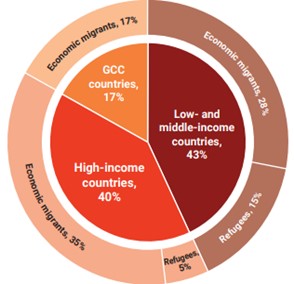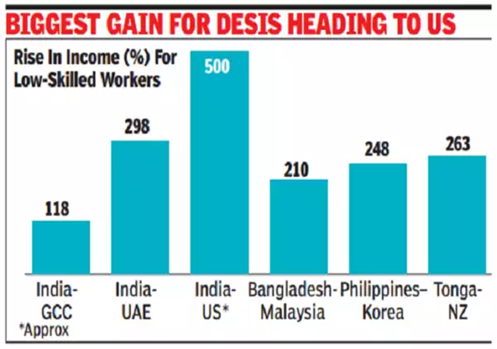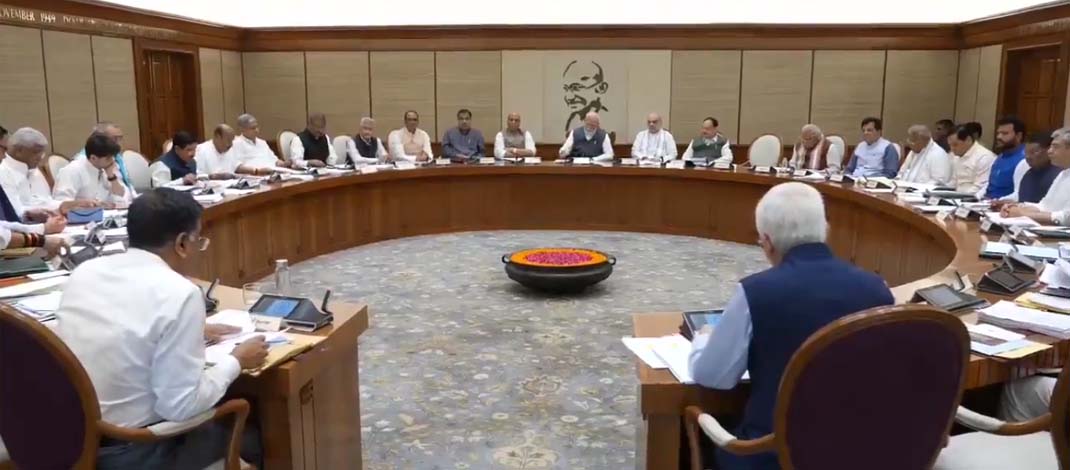- Courses
- GS Full Course 1 Year
- GS Full Course 2 Year
- GS Full Course 3 Year
- GS Full Course Till Selection
- Online Program
- GS Recorded Course
- NCERT (Recorded 500+ Hours)
- Polity Recorded Course
- Geography Recorded Course
- Economy Recorded Course
- AMAC Recorded Course
- Modern India, Post Independence & World History
- Environment Recoded Course
- Governance Recoded Course
- Science & Tech. Recoded Course
- International Relations and Internal Security Recorded Course
- Disaster Management Module Course
- Ethics Recoded Course
- Essay Recoded Course
- Current Affairs Recoded Course
- CSAT
- 5 LAYERED ARJUNA Mentorship
- Public Administration Optional
- ABOUT US
- OUR TOPPERS
- TEST SERIES
- FREE STUDY MATERIAL
- VIDEOS
- CONTACT US
World Development Report 2023
World Development Report 2023

Latest Context
Recently, the World Bank published the World Development Report 2023 with the title Migrants, Refugees & Societies.
- The report mentioned a 120% income gain for Indians who migrate to another country for work in comparison to a 40% rise in the case of internal migration.
Highlights of the Report
- An Increase in Income: Under-skilled Indian citizens migrating to the US registered a hike in their income of nearly 500% which was followed by the UAE by almost 300%.
- Those migrating to the Gulf Cooperation Council (GCC) nations other than UAE stand to gain less.
Overview of Global Migration and Refugees: Currently, there are 184 million migrants globally, which accounts for 2.3% of the total population including 37 million refugees. There are four types of migrants:
- Economic migrants with strong skill match (e.g., Indian IT professionals in the US or construction workers in GCC nations)
- Refugees who have skills in demand at the destination (e.g., Syrian entrepreneurs in Turkey)
- Distressed migrants (e.g., Some poorly skilled migrants at the US southern border)
- Refugees (e.g., Rohingya in Bangladesh)
Top Migration Corridors: India-GCC, India-US, and Bangladesh-India have been identified among the top migration corridors globally along with Mexico-US, Philippines-US and Kazakhstan-Russia, and China-US.
Increase in Remittances: The remittances of some of the countries have increased with a large migrant population, including India, Mexico, China and the Philippines.
- India is the one country that received the highest ever foreign inward remittances of USD 89,127 million in FY 2021-22.
- Total global remittances were estimated at USD 781 billion in 2021 and have further risen to USD 794 billion in 2022.
A Decline in Working-Age Adults: The percentage of working-age adults will drop sharply in many countries over the next few decades.
- Spain is expected to shrink by more than one-third by 2100.
Challenges in this Regard
- Global Inequalities: According to the World Bank, migration issues are becoming even more widespread and urgent because of the severe divergences between and within countries— in the sense of real wages, labor market opportunities, demographic patterns, and climate costs.
- Lack of Citizenship: A large chunk of people do not have citizenship in the country where they reside. Less than half of the global migrant population that is approximately 43%, live in low- and middle-income countries.
This underlines the global nature of the issue of statelessness that highlights the need for action to address it.
Distressed Migration: Some of the migrants move without skills that match the needs of the destination country and they are not refugees either. Such movements are often distressed and irregular by nature and take place under distressed circumstances.
Way Forward
Match-Motive Framework:
-
The “match” aspect is rooted in labor economics and focuses on how well migrants’ skills and related attributes match the needs of the destination countries.
-
The “Motive” refers to the circumstances under which a person starts searching for an opportunity.
-
It determines the extent to which migrants, origin countries, and destination countries gain from migration: The stronger the match, the larger the gains.
Manage Migration Strategically:
-
Labor migration should be an explicit part of the development strategy of the origin countries.
Balancing Skill Demand and Social Inclusion:
-
Destination countries should encourage migration where the skills migrants bring are in high demand, facilitate their inclusion, and address social impacts that point out concerns among their citizens.
Ensuring Protection:
-
Provide international protection to refugees in a manner that can be sustained financially and socially because most refugee situations last many years.
Manage Cross-border Relations Differently:
-
Bilateral cooperation can be used progressively to strengthen the match of migrants’ skills and attributes with the needs of destination economies.


